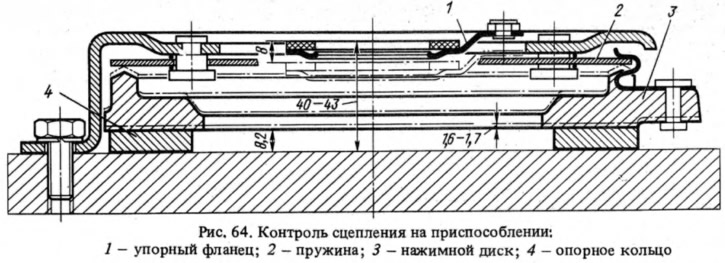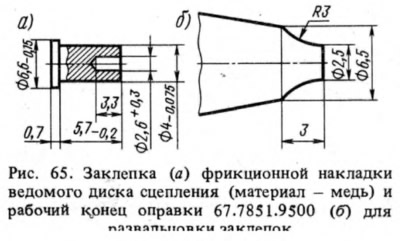
The distance from the base to the working surface of the friction lining of the thrust flange should be 40-43 mm. In the course of work, due to the wear of the friction surfaces of the clutch discs, this size increases. If it reaches 48 mm or the movement of the pressure plate is less than 1.4 mm, the clutch cover assembly with the pressure plate, pressure spring and thrust flange is replaced.
The friction linings of the driven disk are replaced when cracks appear, the distance between the rivet and the working surface decreases to 0.2 mm, with one-sided scuffing. At the same time, old rivets are drilled with a drill or knocked out with a punch. New rivets (pic. 65, a) flared with mandrel 67.7851.9500 (pic. 65b). The end runout of the working surface of the friction linings of the driven disk should not exceed 0.5 mm. If it is greater, then the disk is straightened by bending the part where the beat is found, or replaced with a new one.

If cracks appear on the driven disk or damper springs, replace the driven disk assembly.
